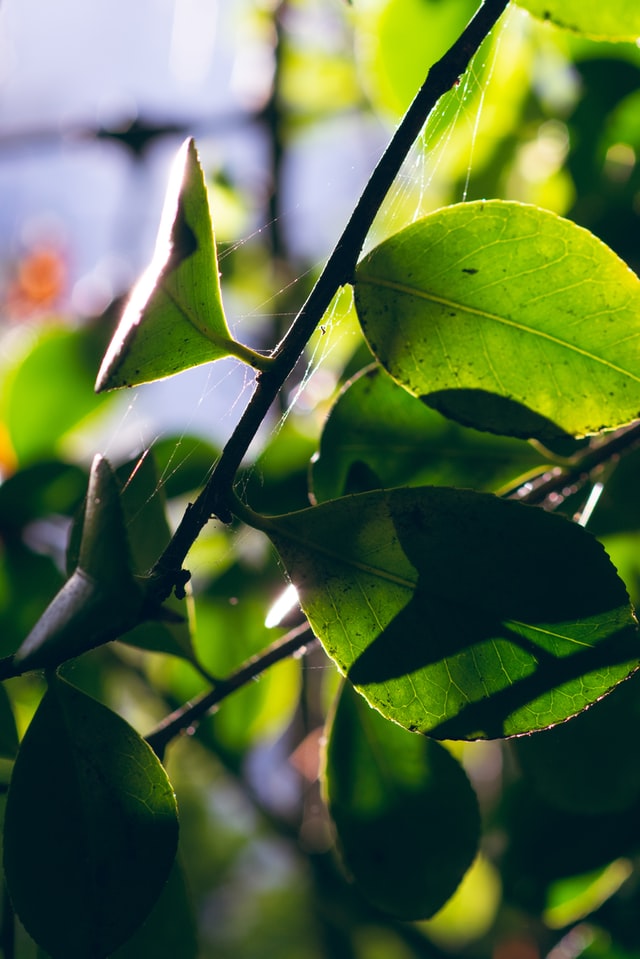
How to Get Rid of Spider Mites for Good!
Identify, Prevent, and Get rid of spider mites on your houseplants
If you want to strike fear into the hearts of any houseplant collector, just two words are all you need: spider mites. If you just shuddered a little bit, you’ve probably experienced these horrendous plants for yourself. There is no bulletproof way to completely avoid getting spider mites on your houseplants, or any pest for that matter. But you can better prepare yourself to eliminate spider mites, and prevent an outbreak from becoming an infestation. Here’s how to really get rid of spider mites for good!
What are spider mites?
Spider mites are one of the most common houseplant pests. They’re even quite common in outdoor gardens as well. Unlike fungus gnats, which often do minimal damage, spider mites can significantly damage your houseplant collection. They are incredibly small, smaller than the head of a pin. This can allow them to rapidly reproduce and go undetected as they feast away on your houseplant’s chlorophyll until it becomes completely infested. Spider mites prefer warm, dry conditions and are particularly attracted to plants that are experiencing stress, or that have crispy or sad leaves.
How to Identify a Spider Mite Outbreak?
If you want to get rid of spider mites, first you need to be able to identify them on your houseplants. Here are a few red flags to look out for:
- A “dust-like” substance on your plant’s leaves
- Curling leaves or a sudden decline in your houseplant’s appearance.
- The infamous webbing between the stems and under the leaves.
How do Spider Mites Happen?
So how do spider mite infestations happen? An infestation can happen very quickly since spider mites are incredibly small. They can spread very quickly and even hitch a ride on new houseplants completely undetected. Here are a few ways that your houseplants can attract spider mites:
- Open windows near your plants
- Your houseplant is experiencing stress from other causes
- Hot, dry conditions
- Dead, crispy foliage sitting in the plant’s pot
- Bringing new houseplants home
- Tropical foliage plants are more susceptible (think Calathea, Stromanthe, Monstera, Philodendron, Anthuriums, Syngonium, Alocasia, etc)
How to Prevent Spider Mites
- If you want to prevent spider mites in your houseplant collection, you can incorporate a few simple steps into your regular houseplant care routine.
- Keep the humidity levels up around your tropical houseplants
- Isolate any new houseplants that come into your home for several weeks to monitor for pests before introducing them to your collection.
- Monitor and treat plants that are experiencing any signs of stress.
- Give your plants a “shower” to knock off any pests on a routine basis.
- Clean the dust off your houseplant leaves regularly.
- Prune any crispy or dead leaves and remove them from your plant, the pot, or the soil.
For more tips to prevent houseplant pests, check out this blog post on General Pest Prevention! These pest prevention tips are effective, but it’s also important to remember that despite our bests efforts pests do happen, which is why we’ll dive into how to get rid of spider mites as well!

First, A Quick Storytime!
When I first started my plant journey, I was aware that pests could be a part of owning houseplants that I would eventually have to deal with. I still, however, figured it would be a problem in the distant future when I had a large collection and was well equipped to handle them. It was a very hot summer morning, and I had all of my plants sequestered into our sunroom because we were moving in about a week, and I wanted to protect them from our nibbling cat. This is when I noticed the infamous “dust” on one of my calatheas. Then another. Then another.
Because I was not expecting it to happen so soon, I was completely overwhelmed and unprepared to deal with all of these pest-infested houseplants. I didn’t have any supplies to get rid of spider mites so, in a panic, I tossed a number of my Calatheas. I attempted to treat the ones that I deemed salvageable. Had I been prepared and know what I now know, I’m confident I could have saved quite a few of those Calathea that I was very much attached to.
Moral of the story: Even if you’ve never had spider mites before, be prepared ahead of time and you will save yourself the heartache of losing your beloved plants!
How to Get Rid of Spider Mites
1. Isolate any plants that may have spider mites immediately
Whether it’s just a tiny outbreak or your plant is completely covered in webs, the first thing you want to do is isolate your houseplant. Spider mites can spread quickly, and the sooner you spot them and isolate the plant, the better your chances are of salvaging your houseplant (and the rest of your collection). Even after treatment, it’s best to keep the plant in question isolated for a few weeks following the outbreak.
2. Blast off the Spider Mites in the Shower
The next course of action that is very effective is to remove all visible spider mites from your houseplant. This can be done easily by bringing your plant into the shower (or sink if you have a nozzle with good pressure) and blast away the spider mites. Don’t forget to get under the leaves and between the stems. Another option would be to remove the plant from the soil and pot entirely and spray it down completely, including the roots. You can repot it in new soil after treatment, which will eliminate any eggs or larva hiding in the soil.
3. Insecticidal soap
After spraying down your houseplant, you can begin treatment with some insecticidal soap. You can find this at most garden centres, or you can DIY your own mixture. The soap should kill off or deter any remaining pests hiding on your plant. If you removed the plant from the soil, you can repot the plant into fresh soil at this time. Just make sure that you also wash the pot it was living in before you return it.
If you did not remove the plant from the soil and pot, you may need to repeat this treatment a few times before you have successfully get rid of spider mites on your plant.
Here are some other ways to get rid of spider mites:
- Neem Oil: treat your plants with neem oil instead of the insecticidal soap mixture.
- Hydrogen Peroxide: You can also treat the soil with diluted hydrogen peroxide (see Harli G’s excellent how-to video with more!)
- Beneficial Insects: You can release beneficial insects into your collection that will feed on the unwanted pests and won’t harm your houseplants.
After Treating Your Plant:
Once the treatment is done, here’s what you can expect for your houseplants or houseplant during the recovery stages:
- You may need to prune some leaves that are too far gone. Some leaves may have spots, yellowing, crisping, and generally look quite sad after an infestation. By pruning the leaves your plant can conserve energy and focus on growing new leaves.
- Your plant may experience some shock, both from the treatment and from battling the spider mites. Be patient, your plant should eventually bounce back and start growing new leaves, but it may not happen right away.
- Keep a watchful eye to make sure that the spider mites don’t return.



